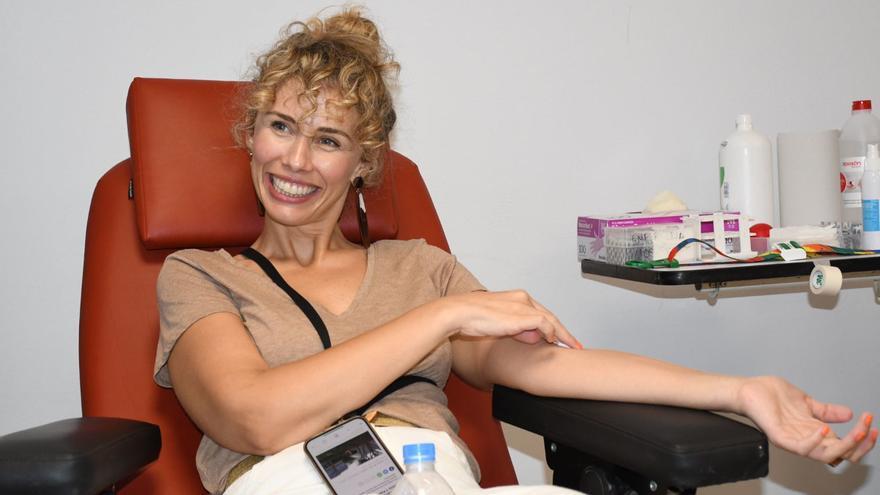
He Canarian Institute of Hemodonation and Hemotherapyunder the Ministry of Health of the Government of the Canary Islands, reports that during 2022 a total of 45,690 donors made 65,935 effective donations. Of these, 62,611 were whole blood and 3,324 apheresis. 61.1 percent of these donations come from regular donors and 17.7 percent from new donors, while recovered donors represent 21.1 percent of the total.
The Canarian blood donor responds to a profile that is between 34 and 49 years old, with a higher number of women in the segment of the youngest, from 18 to 24 years old, and equalized in the segment that is in the fork from 25 to 35 years. From there the donation is mostly male.
The male contribution was 25,859 donors of the total, which represents 56.59 percent, while the contribution of female donors was 19,831, that is, 43.40 percent.
donations by islands
Likewise, 81.71 percent of the donations obtained by the Canary Transfusion Network come from Gran Canaria and Tenerifewhile the remaining 18.28 percent was obtained in the rest of the islands of the Archipelago.
In Tenerife, in 2022, 28,753 effective donations were obtained, 3,399 from new donors, which represents 17.69 percent of the total, 11,745 from regular donors, equivalent to 61.1 percent, and 4,067 from recovered donors, that is. , 21.2 percent. By sex, 60.38 percent were contributed by men and the remaining 39.61 percent by women.
In the gran canaria island 28,436 donations were obtained from 20,273 donors, of which 62.6 percent were from 12,701 regular donors, 16.8 percent from 3,412 new donors, and 20.5 percent from 4,160 recovered donors. Finally, in regard to donation by sex, male donations represented 52.68 percent, while female donations were 47.32 percent.
In Fuerteventura, the total number of donors was 2,307, of which 537 came from new donors, which represents 23.27 percent, while regular donors, 1,372 people, contributed 59.47 percent and 398 recovered donors, 17.25 percent of the total. Of the 2,352 donors on the island during 2022, 51.37 percent were men and 48.65 percent women.
As to Lanzarote, 509 people were new donors, 22.83 percent of the total, 1,319 regular donors, representing 56.07 percent, and 524 recovered donors, representing 22.27 percent. Of the total of 2,307 donors, 52.10 percent were men and 47.89 were women.
For his part, in The Palm, there were 1,471 blood donations registered in 2022, from 1,039 donors, with 15.49 percent being new donors, 52.26 percent regular donors, and 32.24 percent coming from recovered donors. Of the total, 644 donations were made by men, 61.98 percent, while 395 were from women, representing 38.02 percent.
In La Gomera 425 effective donations were obtained last year, from 47 new donors, which means 14.96 percent, 163 from regular donors, that is, 51.91 percent, and 104 from recovered donors, which represents the 33.1 percent of the total. Regarding donation by sex, 314 people donated in 2022, being 201 men, 64.01 percent, and 113 women, which translates into 35.98 percent.
Finally, in The iron A total of 197 people came to donate, obtaining 266 donations, of which 116 donors were men, 58.88 percent, and 81 women, representing 41.11 percent. Regarding the type of donor, 17.76 percent were new donors, 45.68 percent corresponded to regular donors and 36.54 percent of the donations came from recovered donors.
Once again, the solidarity of the Canarian citizens allowed the donations of blood and apheresis obtained by the Canary Islands Transfusion Network (RTC) to be sufficient to meet the demands of the hospitals, fulfilling the objective of self-sufficiency.
Requirements to donate
To donate blood you can go directly or you can request an appointment by calling 012 or 922 470 012 / 928 301 012 (option 8), from Monday to Friday from 10:00 a.m. to 8:00 p.m. or by filling in the form published on the web cover effectdonacion.com.
Before going to donate, it is advisable to review the information published on this same web page in the Information and Protocol tab, to familiarize yourself with the established security measures and the self-assessment test.
















